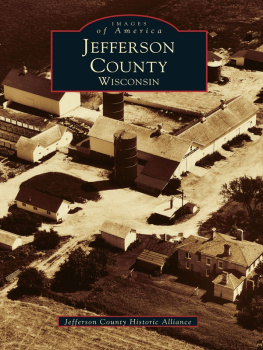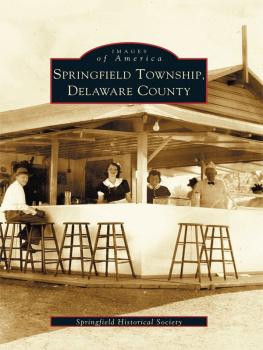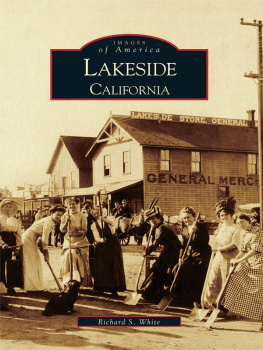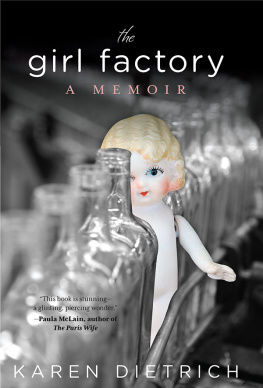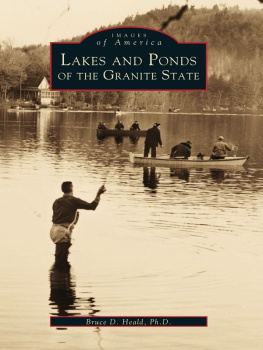
IMAGES
of America
MONACA

In 1876, Monaca was a small community centered between modern-day Ninth and Fourth Streets. Most businesses and homes were located within this area, while the rest of the town was primarily farmland. This map shows the original street names, landmarks, and names of the property owners. (Sketch by J.A. Caldwell.)
ON THE COVER: Members of the Monaca No. 1 Fire Department Ladies Auxiliary are pictured on a float in a late-1920s parade. The group was organized on July 5, 1908, and it is the oldest organized fire auxiliary in Beaver County. The charter members were Clara Rambo, Elizabeth Dietrich, Jane Johnson, Nell Cain, Elva Massey (second from left), and Ida Bittner (third from left). (Authors collection.)
IMAGES
of America
MONACA
Carol Dietrich Ripper

Copyright 2015 by Carol Dietrich Ripper
ISBN 978-1-4671-2280-1
Ebook ISBN 9781439650240
Published by Arcadia Publishing
Charleston, South Carolina
Library of Congress Control Number: 2014943777
For all general information, please contact Arcadia Publishing:
Telephone 843-853-2070
Fax 843-853-0044
E-mail
For customer service and orders:
Toll-Free 1-888-313-2665
Visit us on the Internet at www.arcadiapublishing.com
In memory of my parents, George and Betty Dietrich, lifelong residents of Monaca
CONTENTS
ACKNOWLEDGMENTS
This book would not have been possible without the help of the residents and alumni of Monaca. Their willingness to search for pictures and offer contacts and information proved invaluable.
I would also like to thank the Beaver County Historical Research and Landmark Foundation (BCHRLF), the Monaca Hall of Fame (MHF), and the Monaca Borough (MB) for allowing me access to their collections of images.
A special thank you goes to New Brighton author Karen Helbling for providing me with help and guidance on my first endeavor in writing a book.
Unless otherwise noted, all photographs in this book are from the authors collection.
INTRODUCTION
In 1787, Ephraim Blaine received a land grant from the State of Pennsylvania for a 330-acre tract of land called Appetite. This area, which would become downtown Monaca, was mostly wooded with a small clearing made by the Indians. It would undergo various owners over the next 40 years.
The town was later called Phillipsburg in honor of Stephen Phillips, co-owner with John Graham of a successful boat building business. In 1832, he sold this land and village to the secessionists from the Harmony Society and moved his boatyard to Freedom, Pennsylvania.
Maximilian Count de Leon led his 250 dissenters to Phillipsburg and established a colony called the New Philadelphia Society. This society only lasted 18 months before de Leon and some followers left. The remaining German settlers continued to build their town.
On March 6, 1840, the town of Phillipsburg was incorporated. The post office was called Water Cure to avoid confusion with another Pennsylvania town of the same name.
In 1832, St. Peters Evangelical Lutheran Church became the first church in Phillipsburg, and it is still in use as a church today on Fifth Street. The services were held in German into the early 20th century.
In 1848, some of the buildings constructed by the New Philadelphia Society were sold to Dr. Edward Acker for use as a sanitarium he called Water Cure. It offered a method of hydrotherapy, a popular medical treatment for that time. The sanitarium closed before 1865, and a pleasure resort then occupied the site. The buildings were sold to Dr. William Taylor, who opened the Phillipsburg Soldiers Orphans School in 1866. It was the first school of its kind in western Pennsylvania, and it provided education for the children of deceased Civil War soldiers. By 1873, it consisted of 200 acres with an enrollment of 140 students a year on average. In August 1876, a fire destroyed the main building, and the school was closed.
Monaca almost became a college town. In 1866, Louis Thiel donated money for the Lutheran Church to establish a college on Fourth Street in Phillipsburg. A former hotel was purchased, and instruction began with five pupils. Thiel College received its charter in 1870, but in 1871, the college was moved to Greenville, Pennsylvania.
In the early years, residents of Phillipsburg were known as Southsiders due to their location on the southern side of the Ohio River. The town was fairly isolated from the other communities across the river. That changed with the coming of the Pittsburgh & Lake Erie Railroad in 1877 and the building of the suspension bridge in 1896. The bridge was the first highway bridge across the Ohio River in Pennsylvania.
The name of the town was officially changed to Monaca on September 20, 1892. The name came from the Oneida Indian chief Monacatootha, who ruled the Ohio Valley tribes for the Iroquois Confederacy.
The Phoenix Glass Company opened here in 1882. The year 1902 saw a great manufacturing boom when the Pittsburgh Tube Company, Tool Steel Wire Company, and the US Manufacturing Company began operation. The manufacturing boom created a dramatic increase in the population of Monaca and a need for more schools.
The first schoolhouses on record were a redbrick structure torn down in 1884 and a white-framed building erected in 1850. Both schools were on the triangular park on Fifth Street. In the minutes from the 1871 school board meeting, the board instructed all teachers to teach English. Previously, German was the main language spoken and the language of the 1832 settlers. The four-room First Ward School was built in 1882, and four more rooms were added 10 years later to accommodate the increase in population.
In 1896, a two-year program for higher education began, and in 1898, four girls graduated in the first commencement, held in the Monaca Skating Rink at 823 Pennsylvania Avenue. The higher education program was increased to three years by 1902.
By 1906, the school-age population doubled, and the Third Ward School was built on Indiana Avenue as a high school. Various buildings served as overflow schools to alleviate the overcrowding, and a new high school was built at the corner of Indiana Avenue and Tenth Street in 1922.
When Moon Township was annexed in 1931, it brought Monaca Heights into the borough. The George Washington Junior High School was built on Eleventh Street in 1932. By 1940, the school district included seven schools and 60 teachers.
In 1964, a new high school was built on Monaca Heights at Ella Street and Allen Avenue. By the 1990s, the school enrollment was steadily declining, and in 2009, the school districts of Monaca and Center Township merged to become the Central Valley School District. It was the first voluntary school merger in the state of Pennsylvania.
Monaca High School was well known for producing many championship sports teams. For its small size, the borough of Monaca has also produced many professional athletes, including baseball players Howard Shanks, Harold Woodeshick, Joseph Schachern, and Christ Lindsay; football players Dr. Hube Wagner and John Karcis; wrestlers Christy Ramer and middleweight champion Paul Bowser; boxing middleweight champion Teddy Yaroz; and basketball players Mickey Davis, William Zoph, and Bradley Davis.
The early German settlers, and later the Southern and Eastern European immigrants, gave Monaca many craftsmen and merchants along with its reputation as a dedicated, hardworking community. The number of businesses that were in town over the years are too numerous to list, but some that played an important part in the history of Monaca that are not pictured in this book include Dorcas Style Shop, Klingseisen Bakery, Borens Gulf Station, Penn Supermarket, Taorminas Supperette, Echo Point Dairy, Starks Candy Store, Rudish Bakery, Elvridge Service Station, Webers, M.K. Fronko Cash Market, Benders Pharmacy, Prestos Pizza Shop, Newmans Lunch, Bittners Beanery, Werners Barber Shop, W.A. Dalzell groceries, Bechtels Grocery Store, and the Roxy theater.
Next page

